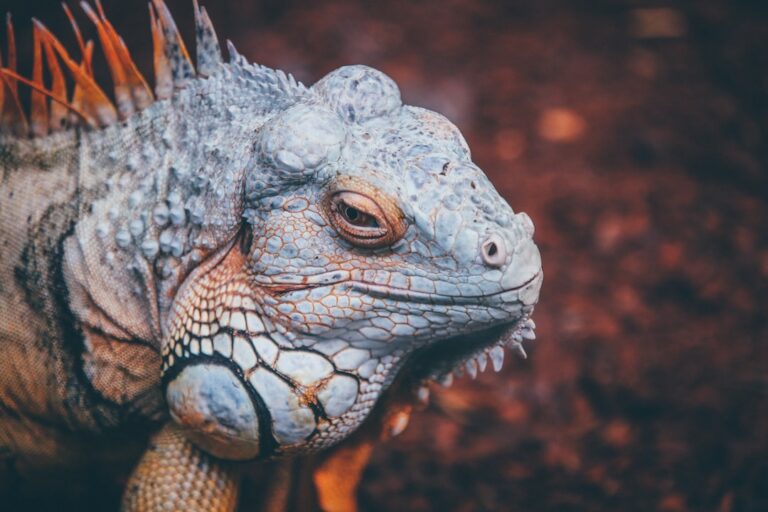Do Iguanas Purr?
Iguanas are fascinating creatures that have become popular pets for reptile enthusiasts. These reptiles are known for their unique vocalizations and body language, which play a crucial role in their communication. Understanding iguana vocalizations and body language is essential for anyone who wants to properly care for these animals and ensure their well-being.
Table of Contents
The Iguana’s Vocalizations: What Sounds Do They Make?
Iguanas are capable of producing a variety of sounds, each with its own meaning and purpose. One of the most common sounds made by iguanas is hissing. This sound is often a sign of aggression or fear and is used as a warning to potential threats. Another sound that iguanas make is a chirping or clicking noise, which is often heard during courtship displays or when they are feeling content.
In addition to hissing and chirping, iguanas can also produce a low rumbling sound. This sound is often mistaken for purring, but it actually serves a different purpose. The rumbling sound is produced by the contraction of muscles in the iguana’s throat and is used as a territorial display or during aggressive encounters with other iguanas.
Understanding the Iguana’s Body Language
In addition to vocalizations, iguanas also use body language to communicate with each other and with humans. Understanding their body language can help you determine their mood and intentions. For example, when an iguana feels threatened or scared, it may puff up its body and extend its dewlap, which is a flap of skin under its chin. This is a defensive posture meant to make the iguana appear larger and more intimidating.
Another common body language cue in iguanas is tail whipping. When an iguana feels threatened or agitated, it may whip its tail back and forth as a warning sign. This behavior is often accompanied by hissing or other vocalizations. On the other hand, if an iguana is feeling relaxed and comfortable, it may bask in the sun with its body stretched out and its eyes closed.
The Myth of the Iguana’s Purring
There is a common misconception that iguanas can purr like cats when they are feeling content. However, this is not true. While iguanas do produce a rumbling sound that is similar to purring, it serves a different purpose. The rumbling sound is produced by the contraction of muscles in the iguana’s throat and is used as a territorial display or during aggressive encounters with other iguanas.
Scientific evidence has shown that the rumbling sound produced by iguanas is not the same as purring. Cats purr by vibrating their vocal cords, while iguanas produce the rumbling sound by contracting muscles in their throat. This distinction is important because it helps us understand the true meaning and purpose of the sound produced by iguanas.
The Science Behind Iguana Vocalizations
To understand how iguanas produce sounds, it is important to understand their anatomy and physiology. Iguanas have a specialized vocal organ called the larynx, which is located in their throat. This organ contains vocal folds that vibrate when air passes through them, producing sound.
When an iguana wants to produce a vocalization, it forces air from its lungs through the larynx, causing the vocal folds to vibrate. The pitch and volume of the sound produced can be controlled by adjusting the tension of the vocal folds and the amount of air passing through them.
The Role of Vocalizations in Iguana Communication
Vocalizations play a crucial role in iguana communication. They are used to convey various messages and emotions, including aggression, fear, contentment, and courtship. For example, hissing is often used as a warning sign to potential threats, while chirping or clicking noises are used during courtship displays or when iguanas are feeling content.
In addition to these vocalizations, iguanas also use body language and visual displays to communicate. By combining vocalizations with body language cues, iguanas are able to effectively communicate their intentions and emotions to other iguanas and to humans.
How to Interpret Your Iguana’s Vocalizations
Understanding what your iguana is trying to communicate through its vocalizations can be challenging, but there are some tips that can help. First, it is important to observe your iguana’s body language and context when it makes a certain sound. For example, if your iguana hisses while being handled, it may be feeling scared or threatened.
It is also helpful to familiarize yourself with the different vocalizations that iguanas make and their meanings. For example, hissing is often a sign of aggression or fear, while chirping or clicking noises are signs of contentment. By paying attention to these cues and observing your iguana’s behavior, you can better understand what it is trying to communicate.
Common Misconceptions About Iguana Vocalizations
There are several common misconceptions about iguana vocalizations that need to be addressed. One of the most common misconceptions is that iguanas can purr like cats when they are feeling content. As mentioned earlier, this is not true. While iguanas do produce a rumbling sound that is similar to purring, it serves a different purpose.
Another misconception is that all hissing sounds made by iguanas are signs of aggression. While hissing can be a sign of aggression or fear, it can also be a sign of stress or discomfort. It is important to consider the context and observe other body language cues when interpreting an iguana’s hissing behavior.
Can Iguanas Purr? Debunking the Rumors
As mentioned earlier, iguanas cannot purr like cats. The rumbling sound produced by iguanas is often mistaken for purring, but it serves a different purpose. The rumbling sound is produced by the contraction of muscles in the iguana’s throat and is used as a territorial display or during aggressive encounters with other iguanas.
It is important to debunk this myth because it helps us understand the true meaning and purpose of the sound produced by iguanas. By understanding the science behind iguana vocalizations, we can better interpret their behavior and provide them with the care they need.
The Importance of Vocalizations in Iguana Care
Understanding vocalizations is crucial for providing proper care for iguanas. Vocalizations can indicate the iguana’s mood, stress levels, and overall well-being. For example, if an iguana is constantly hissing or displaying aggressive behavior, it may be a sign that it is feeling stressed or uncomfortable in its environment.
By paying attention to vocalizations and other body language cues, you can make adjustments to your iguana’s environment or handling techniques to ensure its comfort and well-being. This can help prevent health issues and improve the overall quality of life for your pet iguana.
Tips for Encouraging Vocalizations in Your Iguana
If you want to encourage your iguana to vocalize more, there are several things you can do. First, create a comfortable environment for your iguana that mimics its natural habitat. This includes providing a spacious enclosure with plenty of hiding spots, basking areas, and climbing opportunities.
Interacting with your iguana regularly can also encourage vocalizations. Spend time with your iguana, talk to it, and offer it treats or toys to play with. This can help build trust and encourage your iguana to vocalize more.
Understanding iguana vocalizations and body language is essential for anyone who wants to properly care for these fascinating reptiles. By understanding the different sounds iguanas make and their meanings, as well as their body language cues, you can better interpret their behavior and provide them with the care they need.
It is important to debunk common misconceptions about iguana vocalizations, such as the myth that they can purr like cats. By understanding the science behind iguana vocalizations, we can better interpret their behavior and provide them with the care they need.
By paying attention to vocalizations and other body language cues, you can ensure the comfort and well-being of your pet iguana. This can help prevent health issues and improve the overall quality of life for your iguana.
If you’re curious about the fascinating behaviors of reptiles, you might be interested in reading the article “Why Do Iguanas Bob Their Heads?” on Reptile Friend. This article explores the peculiar head-bobbing behavior commonly observed in iguanas and provides insights into its possible meanings and purposes. Understanding this unique behavior can help iguana owners better communicate with their scaly companions. So, if you’ve ever wondered why iguanas bob their heads, click here to find out more!







